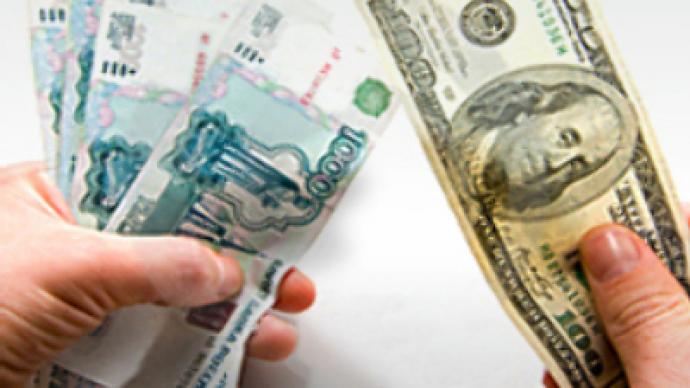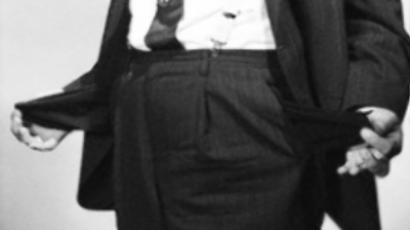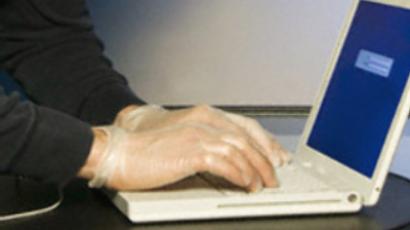The Rouble, the Dollar and the synthetic CDO tripwire

As all the attention turns to the Rouble and whether or not it is going to be devalued, sight seems to be turning from what is actually happening with the Russian currency and what other currencies this relates to, as well as what the recent currency move
Its not a good time to be thinking about the Rouble. Over the last couple of months it has slumped from 23.10 to the U.S. dollar in early August, to more than 27.40 in Mid November. It is also down against the Japanese Yen. But against other currencies, including the Euro and the Pound the Rouble is actually higher.
There are four key factors which are usually pointed to in explaining the fall against the U.S. currency in particular, all of which interact with the others. First there has been the capital outflow from Russia, which the World Bank sees as being worth about $50 Billion for 2008, as the global credit crunch forces global investors to pull out of higher risk environments to keep their dollars – and that’s what they are – at home, where they can get them ASAP if called upon. Then there has been the reduced inflows to Russia since mid year as oil has slumped from $147 BBL in June to about $50 BBL now. To go with this has been the steady reduction in GDP growth forecast as Russia battens down for a looming global recession, with Russian companies lowering their forecasts and shedding employees, and consumers starting to show signs of tightening their belts. Finally there has been the need for Russian corporate borrowers to refinance borrowings made internationally with domestic sources (read Russian government support). Those borrowings have seen companies gain access to Russian Government funds, in Roubles, but need to convert these into dollars to pay out old loans – pushing the Rouble down against the Dollar.
All of these factors are real enough, and all of them compound each other. For example the strengthening U.S. dollar caused by global investors pulling their dollars in, causes everything priced in the dollar – energy and commodities in particular – to decline, and that means less flowing into Russia. The less flowing into Russia, means downward pressure on Russia’s GDP growth, and adds to companies in Russia paring back on capital expenditure and growth plans. In an environment where global interbank rates have gone haywire, the Billions of dollars borrowed internationally by Russian companies, when things were sunnier, have looked less worthwhile, and considerably more expensive than when they were first taken out.
Its no wonder that everyday Russians have taken once again to buying dollars on the streets of Moscow. But the real story is the strength of the dollar and what is underpinning it, rather than the slide of the Rouble. And what is happening behind the dollar needs to be considered closely, over both the short and longer terms, as the Government is believed to be mulling a Rouble devaluation. In short, what is happening with the U.S. dollar is an expression of alarm about what is happening with the global financial system, and the U.S. economy rather than a vote of confidence. The rising U.S. dollar is a barometer of the likelihood of further near term global financial chaos.
What is happening with the U.S. dollar reflects the gaping holes ripped into the balance sheets of what were some of the worlds preeminent financial organizations less than a year ago. They have haemorrhaged money, largely on investment grade rated derivatives. The money they have lost leaves these organizations needing to raise capital simply to continue operations, to drastically reduce their lending – best shown by the stubborn refusal of $USD Libor rates in particular, and interbank rates in general, to return to something akin to where they were about 18 months ago – and for major governments around the world to nationalize, or part nationalize their banking systems, in addition to massive bank bailout and guarantee schemes. They desperately need money, meaning they are often bailing out of quality assets elsewhere to have the money, and in U.S. dollars, easily accessible and to regrow their operations in the worlds largest financial market – The U.S.
Global Central Banks flooding the global banking system with cash hasn’t yet been able to regenerate lending to any significant degree. Not even when banks are now finding government representatives on their boards, acutely aware of the need for a resumption of lending for the wider economy. Not even when governments commit to underwriting such lending. There is a great fear in the market of a need to access to billions, if not trillions of dollars, at notice so short that lending the money short term isn’t seen as a suitable option. Even where the counterparties to such loans are as certain as can be possible in todays environment of still being there when the loan gets called in. Financial institutions are keeping their cash on their balance sheets and they are keeping it in dollars.
A large part of that unknown stems from Credit Default Swaps, or CDS, and its cousins the Collateralized Debt Obligation, or CDO, and the synthetic CDO. Described by no lesser luminary than Warren Buffet as a ‘financial weapon of mass destruction’ they are still surprisingly poorly known to the general public. What they effectively represent is a situation where buyers of a CDS – invariably large financial institutions – make payments to sellers, in exchange for the seller having to making a payoff if an underlying financial instrument defaults. In the circumstances that have unfolded in recent years they have been popular investments for a range of organizations, including numerous utilities, local governments, and risk averse investors around the world, because the payments made by the buyers were constant and low risk, and the risk of having to make the payoff for default was considered remote. They were invariably given an investment grade rating by global ratings agencies.
A Collateralized Debt Obligation is a financial product based on an asset, where the asset is an income stream (of the type being made by buyers of CDS to sellers). To create synthetic CDO’s all that was necessary was to divide up the CDOs into groups which would enable buyers of CDOs to buy into a spread of payments from a range or portfolio of different companies rather than just one. Unlike normal CDOs the synthetic variety didn’t need to own an underlying bond or equity.
The threat that these still represent to the global financial system stems from two factors. One is the sheer scale on which they were sold, with estimates ranging from $500 Billion to $2 Trillion. Nobody knows for sure, as its been an almost completely unregulated market. The wider CDS and CDO markets are estimated to be worth as much as $40-50 Trillion.
The other threat stems from the companies that these default swaps were based on, and the way that many of them are structured. The companies involved represent some of the largest, and what were seen more than a year ago as the safest companies in the world. Companies that were then seen as being a very remote chance of defaulting – think Freddie Mac, Fannie May, American Insurance Group, Ambac, MBIA, Countrywide Financial, Lehman Brothers, and Bear Stearns, to go with major corporates such as GM and Ford, and even international institutions such as Icelandic Banks – which have now either passed into history or which are fending off the prospect, remain parts of the portfolio for numerous synthetic CDOs.
The way that the synthetic CDO is often structured means that when an ‘event’ – which is often the default of a number of companies from a portfolio, often more than 100 companies – occurs the sellers are looking at paying off, with the size of the payoff varying according to the number of companies which are defaulting. As an example – and a regular one – 33% when, say, 7 companies from the list are in default, 66% when 8 companies are in default, and complete redemption when 9 companies from the list are in default. It is this factor which is currently driving the need for companies and large investors in these securities to need large U.S. dollar volumes easily accessible. With a significant number of these companies having been nationalized or defaulted, every additional company failing makes it more likely that investors in synthetic CDO’s are going to have to start making payments to those who sold them. At the point at which this begins to significantly occur there could be an avalanche of redemptions – and that point may be close, with the corporate world pricing in a major, possibly deflationary, downturn, and significant large corporate players – start with GM and Ford, but watch American and British property developers and builders, and don’t discount the possibility or more financial failures in North America or Europe, with Citigroup’s massive cutbacks this week a sign of just how bad things are – fighting for their very existence.
And its this prospect which makes the short term management of the Rouble, and the capacity of the Central Bank of Russia to defend it from within a policy framework over the short and longer term, increasingly problematic. With bond yields currently spiking, reflecting the market pricing in a greater risk of defaults, the need for those who have invested in synthetic CDOs, in particular, to react to the same risk – corporate default – means that they simply have to have U.S. dollars nearby. At this point every successive corporate failure emanating from Europe or North America, increase the risk of massive sudden capital flows.
What happens the day after they start occurring is essentially anyones guess. The longer term outlook for the U.S. dollar has to factor in a massive current account deficit, a massive budget deficit, and a U.S. treasury which now needs to add to its servicing requirement the bailouts for Fannie Mae and Freddie Mac, amongst others, and will soon be needed to fund whatever fiscal stimulus the incoming administration decides upon to for the U.S. economy. So while those managing the Rouble today need to think about how to defend it against a rising U.S. dollar, they also need to keep in mind how they may need to come back the other way if the unthinkable happens.
James Blake, RT














